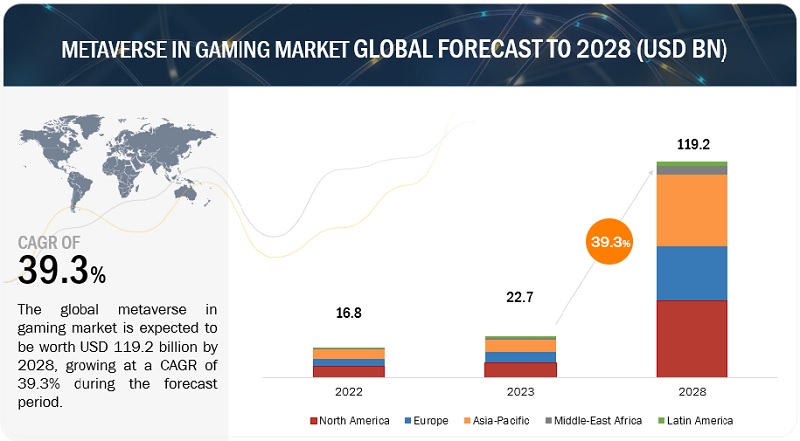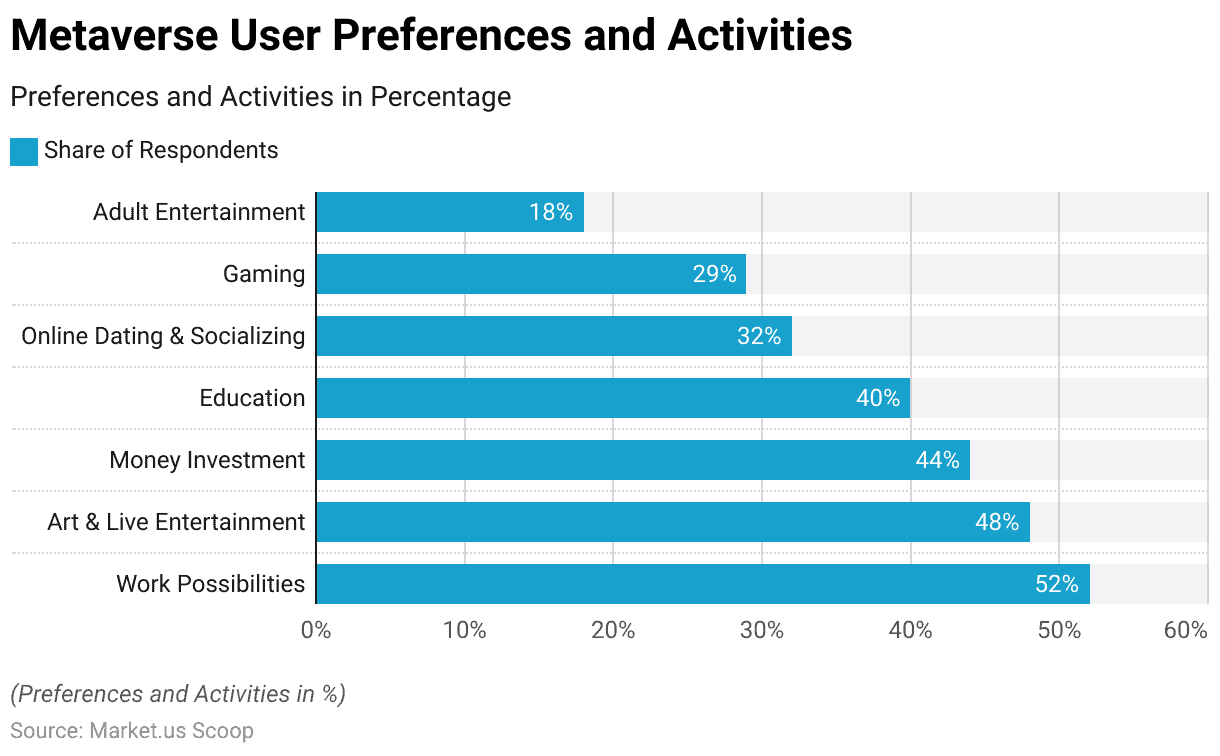Imagine a digital realm where you can interact, socialize, and create without boundaries—a place where your virtual experiences mirror real life. This is the Metaverse, and it’s rapidly transforming how we connect and engage online.
As someone curious about the future of digital spaces, you might be wondering just how widespread Metaverse platform adoption has become and what it means for you. We delve into the latest statistics and insights that reveal the meteoric rise of the Metaverse.
You’ll discover how businesses, individuals, and creators are embracing these platforms to innovate and expand their horizons. By understanding these trends, you can better navigate your own path in this burgeoning digital landscape. Are you ready to unlock the secrets of the Metaverse and see how it’s shaping the future? Keep reading to find out!

Metaverse Evolution
The Metaverse is growing fast. Many people are joining it every day. Companies are investing a lot of money. They see a big future in this space. People use the Metaverse for fun and work. Virtual reality is a big part of this. It feels real and exciting.
Kids and adults both love the Metaverse. They can create and explore new worlds. This makes learning fun and engaging. Many schools use it for education. Teachers make lessons more interactive. Businesses also use the Metaverse for meetings. It saves time and money.
There are many platforms in the Metaverse. Each has unique features. Roblox and Fortnite are popular among kids. Decentraland and Sandbox attract adults. People spend more time in these virtual worlds. This trend continues to grow.
Current Adoption Rates
Metaverse platforms are growing fast. Many people now use these virtual worlds. Adoption rates are rising each year. Young users love exploring new spaces. Businesses also see potential. They use metaverse for meetings and events. This trend is not slowing down. Statistics show more users every month. Tech companies invest heavily in these platforms. They build better virtual experiences. Social interactions in metaverse attract users. People enjoy connecting in unique ways. Entertainment options are vast. From games to virtual concerts. Metaverse is more than just a trend. It’s becoming a part of daily life.
Industry-specific Adoption
The gaming world is a big fan of the metaverse. Players enjoy more realistic experiences. They feel like they are inside the game. Many companies are making virtual reality games. These games are fun and exciting. The graphics are amazing. People love to explore new worlds. They can play with friends too. The metaverse makes it all possible.
Shopping in the metaverse is fun. People like to see and try items virtually. It feels like shopping in a real store. Brands create amazing online shops. Customers can walk around and pick items. They can ask for help too. This makes shopping easy and exciting. E-commerce in the metaverse is growing fast.
Learning in the metaverse is cool. Students enjoy virtual classrooms. They can see and touch things in 3D. This helps them understand better. Teachers use fun tools to teach. Training becomes more interactive. People learn new skills quickly. The metaverse helps make learning fun and easy.
Doctors use the metaverse to treat patients. They see 3D models of the body. This helps in surgery. Patients get better care. Virtual reality helps in therapy. People feel calm and relaxed. Training new doctors is easier too. The metaverse brings new hope to healthcare.

Regional Adoption Trends
North America leads in metaverse adoption. Many people love exploring virtual worlds. Big companies invest in this technology. Schools use it for learning. It helps students understand complex topics. People enjoy new ways to play and work. This region is a hub for tech innovation.
Europe is catching up in the metaverse race. Many countries invest in virtual spaces. Artists showcase their work online. This brings new opportunitiesfor creators. Businesses use the metaverse for marketing. It offers a fresh way to connect with customers. The future looks bright for Europe’s digital scene.
Asia-Pacific sees rapid growth in metaverse use. Young people are very interested. Many play games and join virtual events. Companies see a chance to reach new users. Governments support tech innovations here. This region is a key player in the digital world.
Emerging markets show potential for metaverse growth. Access to technology is improving. More people can now explore virtual worlds. These regions are ready for digital change. Local businesses start to adopt new tech. The metaverse can bring many benefits here.
User Demographics
The metaverse attracts a wide range of age groups. Young people, especially teenagers, are very active. They love exploring and creating. Adults in their 20s and 30s also show interest. Many find it fun and engaging. Older adults are joining too. Their numbers are growing. Age diversity is clear in the metaverse.
Gender plays a role in metaverse usage. Both males and females are users. Men are slightly more active. Women are catching up quickly. They enjoy social interactions. More females are joining. Gender balance is improving over time. The metaverse is becoming more inclusive.
User engagement is high in the metaverse. People spend hours daily. Young users are highly engaged. They explore and interact a lot. Older users are less engaged. They prefer simpler activities. Engagement levels vary by age and interest. Many users return often. The metaverse keeps them interested.
Driving Factors
Technology grows fast. Virtual Reality (VR) and Augmented Reality (AR) are key. They make the metaverse more real and fun. Better internet speeds help too. People can explore without delays. New gadgets like smart glasses make it easy.
People want new digital experiences. They love games and social places online. Young people spend a lot of time in digital worlds. They enjoy meeting friends there. Creativity is another big draw. Users love to create and share ideas.
Many big companies invest in the metaverse. They see a bright future. Brands create spaces to sell products. This attracts more users. Partnerships between tech giants boost growth. More money means better platforms.
Challenges In Adoption
Many people find the technology hard to use. Some devices need a lot of power to run. Not everyone has a computer that can handle it. This can stop people from joining the metaverse. Also, the internet speed must be fast. Slow internet can make it hard to enjoy the experience.
Privacy is a big worry for many users. People fear their data might be misused. When using the metaverse, personal information may be shared. Not everyone feels safe with this. They want to know how their data is being handled. Trust is needed for more people to join.
Joining the metaverse can be expensive. Special devices are often needed. These devices can cost a lot of money. Not everyone can buy them. Also, some platforms charge fees to use them. This can make it hard for many to access the metaverse. Reducing costs can help more people join.
Future Projections
Growth Opportunitiesin the metaverse are huge. Many people will join. More platforms will appear. Companies will invest more money. New jobs will be created. The metaverse will change how we live. It will change how we work. It will change how we play.
Potential Market Leadersare already forming. Big tech companies are investing. Facebook is now Meta. Google is working on projects. Microsoft is exploring new ideas. Smaller companies are also trying hard. They want to be part of the future. They want to lead in the metaverse.
Predicted Innovationswill surprise us. Virtual reality will improve. Augmented reality will grow fast. New tools will help us connect. We will learn and play in new ways. Technology will advance quickly. The future of the metaverse is exciting.

Frequently Asked Questions
What Is Metaverse Platform Adoption Rate?
Metaverse platform adoption rate refers to the speed at which users embrace virtual environments. It is influenced by technological advancements, user experiences, and industry investments. Tracking this rate helps businesses gauge market potential and strategize effectively for growth in the digital landscape.
How Many Users Are In The Metaverse?
The metaverse currently boasts millions of users globally. This figure continues to grow as more companies develop immersive experiences. Users range from gamers and social media enthusiasts to businesses exploring virtual commerce and collaboration opportunities.
Which Industries Are Adopting Metaverse Platforms?
Industries such as gaming, education, real estate, and retail are rapidly adopting metaverse platforms. These sectors leverage virtual environments for immersive experiences, training, and marketing. Adoption is driven by the potential for increased engagement and innovative service offerings.
What Factors Influence Metaverse Adoption?
Factors influencing metaverse adoption include technological advancements, user experience, and market trends. Accessibility, affordability, and compelling content also play crucial roles. Businesses must consider these elements to successfully attract and retain users in virtual environments.
Conclusion
Metaverse platforms are growing fast. Users are exploring new digital spaces. Businesses are tapping into virtual potential. Stats show rising adoption rates. People find new ways to connect. Immersive experiences draw attention. Metaverse is not a fad. It’s shaping future interactions.
Companies should consider strategic involvement. Understanding trends can benefit organizations. Staying informed is key. Dive into data, explore possibilities. The digital frontier is evolving rapidly. It’s an exciting time for technology. Metaverse is here to stay. Embrace the change. Engage with virtual worlds.
The future holds endless opportunities.
Read More:
- Network Automation Tools ROI: Boosting Efficiency & Savings
- Noise‑Cancelling Earbuds Battery Life: Maximize Your Usage
- Ci/Cd Pipeline Tools Comparison: Boost Your DevOps Efficiency
- Serverless Vs Containerized Workloads: A Comparative Guide
- Vr Content Creation Tools 2025: Revolutionize Your Creations
- Best Gaming PC Build under $1500: Ultimate Performance
- Best Cross‑Platform Mobile Frameworks 2025: Top Picks
- Javascript Frameworks Benchmark 2025: Speed & Performance

